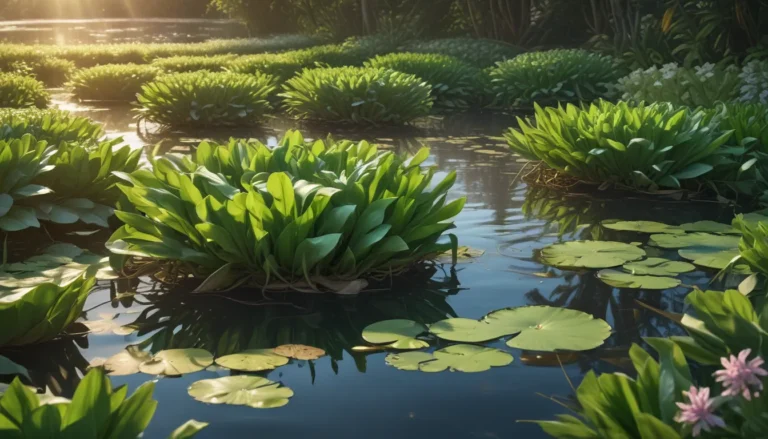The pictures we use in our articles might not show exactly what the words say. We choose these pictures to make you interested in reading more. The pictures work together with the words but don’t take their place. The words still tell you the important facts.
If you've ever been captivated by the stunning beauty of the Royal Poinciana tree, also known as the Flamboyant Tree, you're not alone. This majestic tree has the power to transform any landscape with its fiery blooms, vibrant colors, and wide, welcoming shade. But there's more to this tree than meets the eye. From its unique characteristics to its cultural significance and environmental benefits, the Royal Poinciana has a fascinating story to tell. Join us as we explore the 16 best facts about the Royal Poinciana Tree that will surely amaze you and deepen your appreciation for this natural wonder.
Exploring the Royal Poinciana Tree
The Royal Poinciana, scientifically known as Delonix regia, hails from Madagascar and stands out as one of the most visually striking trees in tropical landscapes. Its vibrant orange-red flowers, fern-like leaves, and woody seed pods add to its unique appeal. This tree not only dazzles with its beauty but also provides essential shade and habitat for wildlife, making it a valuable addition to any environment.
Where to Find Royal Poinciana Trees
Royal Poinciana trees can be found in tropical and subtropical regions worldwide, from the Caribbean to parts of Africa and Australia. In the United States, they thrive in states like Florida, Southern California, and parts of Arizona, flourishing in USDA zones 10 through 12.
Unique Characteristics of the Royal Poinciana Tree
- Height: These trees can grow up to 40 to 50 feet tall, with an equally wide spread, making them excellent shade providers.
- Bloom Season: The spectacle of orange-red flowers typically occurs in late spring to early summer, transforming trees into a blaze of color.
- Leaves: The delicate, fern-like leaves of the Royal Poinciana add to its beauty even when not in bloom.
- Seed Pods: Long and woody, measuring up to 24 inches, the tree's seed pods can linger long after the leaves have fallen, adding interest to the tree's appearance.
Caring for a Royal Poinciana Tree
To ensure the health and longevity of a Royal Poinciana tree, proper care is essential. Here are some key steps to follow:
- Plant in full sun to encourage vibrant blooming.
- Water young trees regularly to establish a deep root system, then reduce frequency for mature trees.
- Fertilize with a balanced, slow-release fertilizer during the growing season to support healthy growth and flowering.
Environmental Benefits of Royal Poinciana Trees
Royal Poinciana trees play a vital role in the ecosystem by providing habitat and food for wildlife, reducing local temperatures with their shade, and preventing soil erosion with their root systems. Their impact goes beyond aesthetics, contributing to the overall health of the environment.
Cultural Significance of Royal Poinciana Trees
In many cultures, Royal Poinciana trees symbolize good fortune and are celebrated in literature and art for their striking beauty. Artists and poets often reference these trees as symbols of passion and vibrancy, highlighting their cultural significance.
Challenges and Future of Growing Royal Poinciana Trees
While growing Royal Poinciana trees can present challenges such as space requirements and susceptibility to frost damage, the future of these trees looks promising. As climate zones shift due to global warming, new areas may become suitable for these trees, allowing them to thrive in new landscapes.
Embracing the Beauty of the Flamboyant Tree
The Royal Poinciana tree, with its fiery blooms and sprawling branches, is a testament to nature's artistry and resilience. Beyond its visual appeal, this tree creates ecosystems, supports wildlife, and inspires communities. Whether you're a gardening enthusiast, a nature lover, or simply someone who appreciates beauty in all its forms, the Royal Poinciana tree has something to offer. Take a moment to admire these magnificent trees and appreciate the myriad benefits they bring to our world.
Frequently Asked Questions
Q: What makes the Royal Poinciana tree so special?
A: Known as the "Flame Tree" for its fiery blooms and broad canopy, the Royal Poinciana stands out for its vibrant beauty and shade-providing qualities.
Q: How often does the Royal Poinciana bloom?
A: Typically once a year, during late spring or early summer, depending on location and climate.
Q: Can the Royal Poinciana tree grow in any type of soil?
A: While adaptable, these trees prefer well-drained, slightly acidic to neutral soils for optimal growth.
Q: How big can the Royal Poinciana tree get?
A: With heights reaching 30 to 40 feet and wide branches spanning 40 to 60 feet, these trees provide ample shade.
Q: Is the Royal Poinciana tree fast-growing?
A: Yes, under the right conditions, these trees can exhibit rapid growth, especially in their early years.
Q: What wildlife is attracted to the Royal Poinciana?
A: Birds and bees are drawn to the nectar-rich flowers and dense foliage of the Royal Poinciana.
Q: How long can a Royal Poinciana tree live?
A: With proper care, these trees can thrive for 50 to 60 years or more, becoming long-term companions in the landscape.
Q: Does the Royal Poinciana tree have any medicinal uses?
A: Traditionally, parts of the tree have been used in folk medicine, although caution is advised when exploring herbal remedies.
Conclusion
The Royal Poinciana, with its vibrant colors, lush foliage, and cultural significance, continues to captivate hearts and minds around the world. As we appreciate the beauty of these trees, let us also recognize their pivotal role in supporting wildlife, enhancing the environment, and enriching our lives. Whether you seek inspiration from nature's wonders or simply enjoy the sight of a stunning tree in bloom, the Royal Poinciana offers a treasure trove of benefits and stories waiting to be discovered. Take a moment to celebrate the Flamboyant Tree and the joy it brings to our world.






